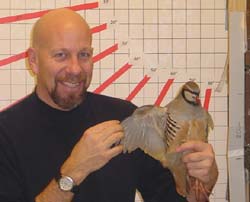Life Sciences and Chemistry
Articles and reports from the Life Sciences and chemistry area deal with applied and basic research into modern biology, chemistry and human medicine.
Valuable information can be found on a range of life sciences fields including bacteriology, biochemistry, bionics, bioinformatics, biophysics, biotechnology, genetics, geobotany, human biology, marine biology, microbiology, molecular biology, cellular biology, zoology, bioinorganic chemistry, microchemistry and environmental chemistry.

Umbilical cord matrix, a rich new stem cell source, study shows
The cushioning material or matrix within the umbilical cord known as Wharton’s jelly is a rich and readily available source of primitive stem cells, according to findings by a research team at Kansas State University.
Animal and human umbilical cord matrix cells exhibit the tell-tale characteristics of all stem cells, the capacity to self-renew and to differentiate into multiple cell types.
Researchers Kathy Mitchell, Deryl Troyer, and Mark Weiss of the College of Veterinary

New Study Suggests Missing Link that Explains How Dinosaurs Learned to Fly
Two-legged dinosaurs may have used their forelimbs as wing-like structures to propel themselves rapidly up steep inclines long before they took to the skies, reports a University of Montana researcher in the January 17 issue of the journal Science. The new theory adds a middle step that may link two current and opposing explanations for how reptiles evolved into flying birds.
According to Kenneth Dial, author of the report, the transition from ground travel to flight may have required a “

Researchers decipher cause of parasite’s worldwide spread
Research at Washington University School of Medicine in St. Louis reveals that a unique combination of genes inherited less than 10,000 years ago allows the parasite responsible for toxoplasmosis to infect virtually all warm-blooded animals.
Parasite life cycles are complex and thought to develop over long periods with their hosts. This study reveals that parasites sometimes adapt rapidly to new hosts, indicating that host-parasite relationships may not always represent stable, long-term as

Early mammals used pelvic bones to trot, study finds
Scientists studying the earliest mammals have been stumped for centuries about the function of two pelvic bones found in the fossil record that most mammals don’t have today. A study published in this week’s issue of the journal Science suggests those bones were involved in locomotion and helped the animals become more mobile, a find that could help researchers pinpoint a key moment in the evolution of mammals.
Biologists at Ohio University and Buffalo State College studied modern

Too much oxygen on the cell biology bench? New study suggests so
Research conducted at Ohio State University suggests that cell biologists may be exposing the cell cultures they study to too much oxygen.
This finding could have broad implications for cellular biology research, which receives billions of dollars of funding nationally, said Ohio State scientist Chandan Sen. He is the lead author of a study which suggests that cells act differently depending on how much oxygen they are exposed to, especially when it is too much.
The air we br

Columbia Shuttle to examine space effects for Hebrew University adult stem cell project
Genetically engineered adult stem cell cultures will be accompanying Israel’s first astronaut, Col. Ilan Ramon, on his mission aboard the U.S. space shuttle Columbia, as part of research being carried out at the Hebrew University of Jerusalem.
The research focuses on building new, specialized cells through the use of adult stem cells, using techniques of genetic engineering. The technology is based on isolating adult stems cells taken from bone marrow and converting them into bone, cartilage